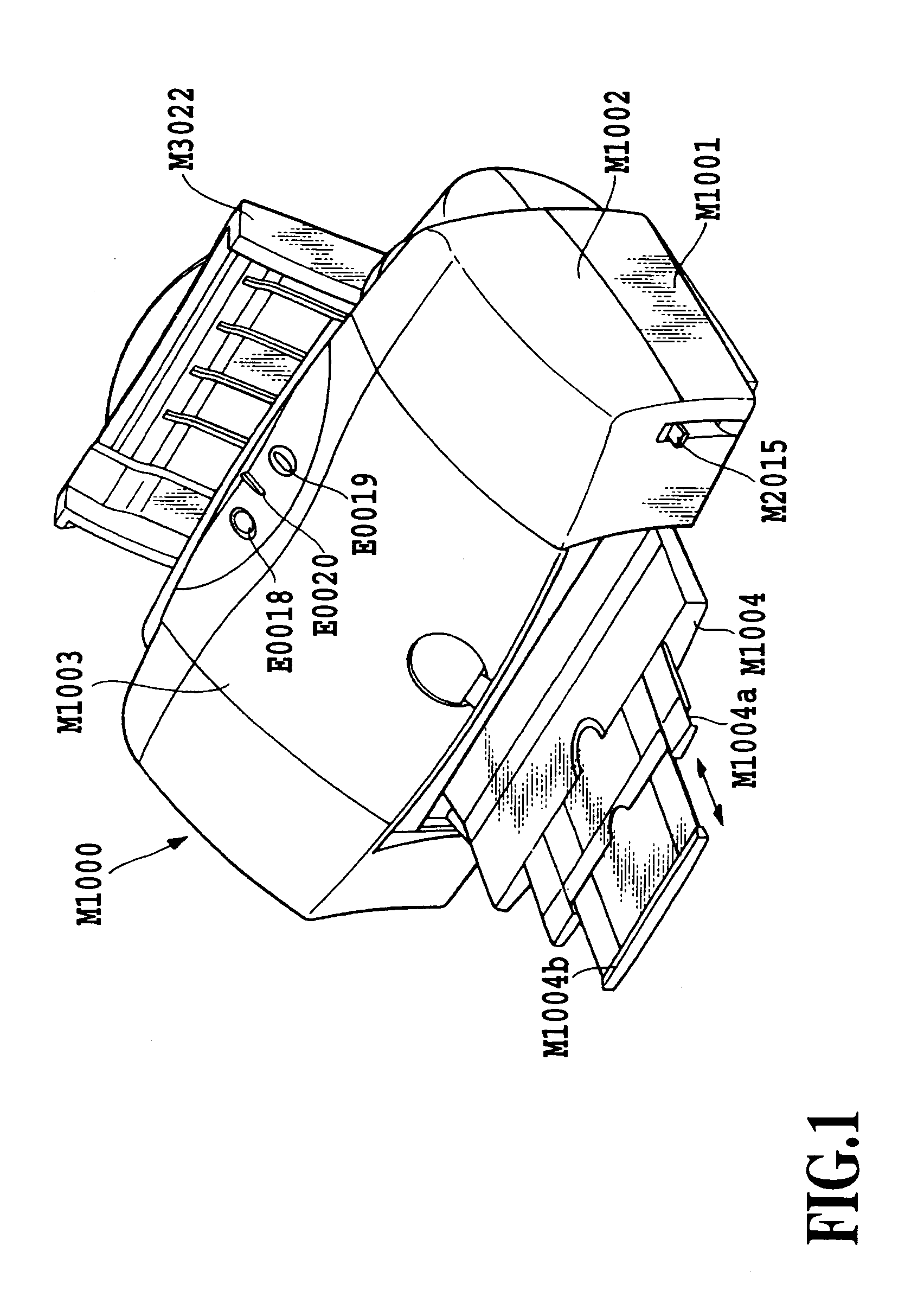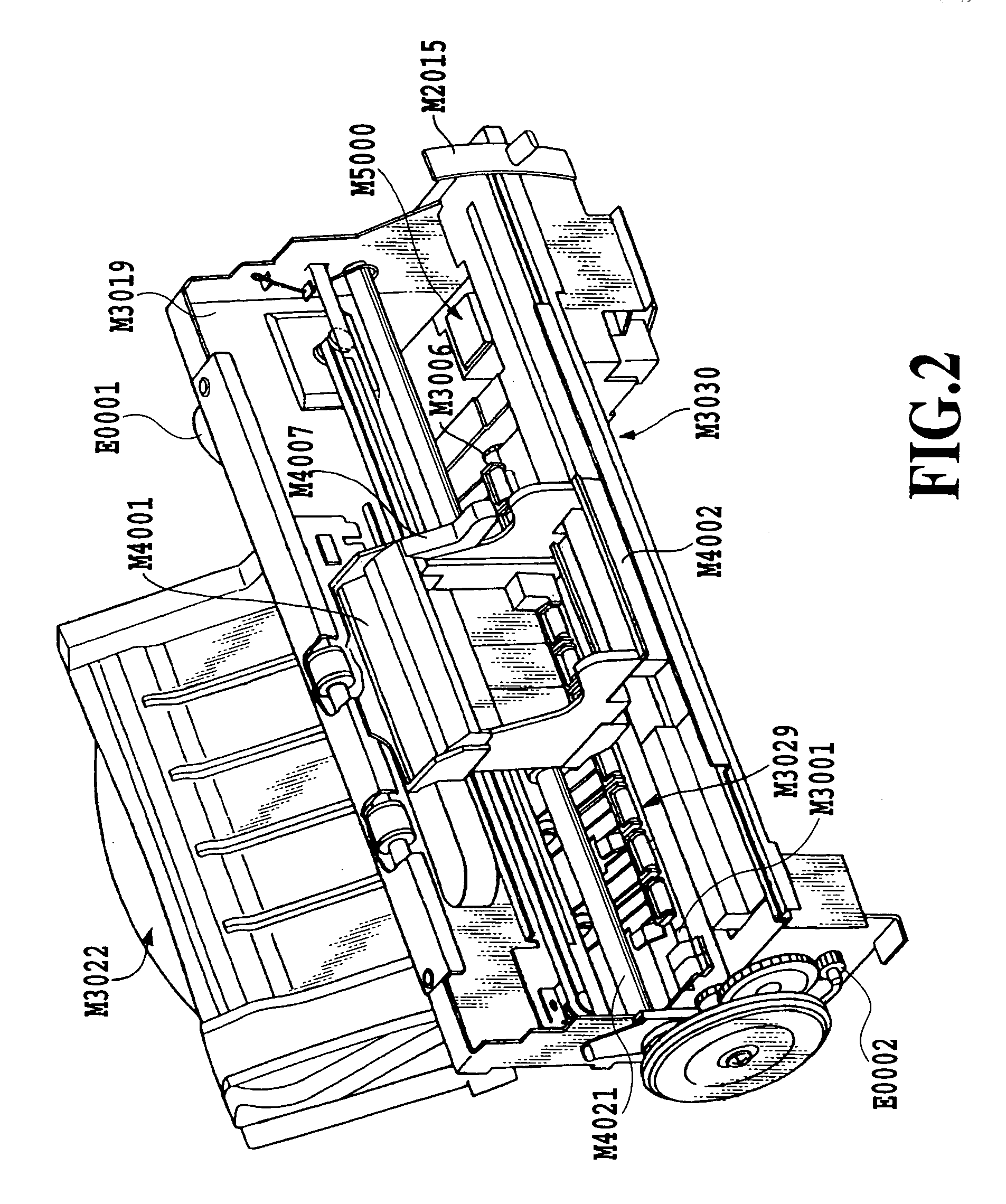Adjustment method of printing positions, a printing apparatus and a printing system
a printing apparatus and printing position technology, applied in printing mechanisms, printing, spacing mechanisms, etc., can solve the problems of large deviation of image formation, large impact of ejection timing, and inability to apply ejection timing to all circumstances, so as to prevent image quality degradation and high quality images
- Summary
- Abstract
- Description
- Claims
- Application Information
AI Technical Summary
Benefits of technology
Problems solved by technology
Method used
Image
Examples
second embodiment
10. Second Embodiment
[0260]Next, a second embodiment of the present invention will be described. This embodiment concerns a registration mechanism used when a bi-directional printing is performed by the interlace printing described in the Related Art.
[0261]As described by referring to FIG. 29, in the interlaced bi-directional printing, a dot formation position deviation between the forward and backward scans will result in a trouble similar to that caused by the dot position deviation between the even-numbered nozzle column and the odd-numbered nozzle column in the first embodiment.
[0262]Hence, in this embodiment, the pattern of FIG. 18, which has been shown to be used for the O / E registration in the first embodiment, is applied as the bi-directional registration pattern. Printing only the black, which is most easily distinguishable, will be enough because the pattern is used for the bi-directional registration.
[0263]When a bi-directional dot formation position deviation occurs, the...
third embodiment
11. Third Embodiment
[0267]Next, a third embodiment will be described. Here, we will describe a case where a plurality of nozzle columns with a low resolution are arranged on a print head.
[0268]FIG. 25 shows a multi-nozzle construction used in this embodiment. Here, four columns of 128 nozzles with 600 DPI (about 42-μm pitch) are shifted about 10.5 μm from each other (512 nozzles in all) to achieve a resolution of 2400 DPI for one color. Four groups of four nozzle columns each, i.e., 16 nozzle column in total, are integrally arranged side by side as shown to realize a four-color printing with 2400 DPI.
[0269]In this embodiment, too, image impairment due to ink landing position deviations among the nozzle columns is conceivable as in the first embodiment. It should be noted, however, that this embodiment requires not only an adjustment between even- and odd-numbered columns, but also adjustment for each of first column (nozzle column associated with the printing of first raster to (4n+...
PUM
 Login to View More
Login to View More Abstract
Description
Claims
Application Information
 Login to View More
Login to View More - R&D
- Intellectual Property
- Life Sciences
- Materials
- Tech Scout
- Unparalleled Data Quality
- Higher Quality Content
- 60% Fewer Hallucinations
Browse by: Latest US Patents, China's latest patents, Technical Efficacy Thesaurus, Application Domain, Technology Topic, Popular Technical Reports.
© 2025 PatSnap. All rights reserved.Legal|Privacy policy|Modern Slavery Act Transparency Statement|Sitemap|About US| Contact US: help@patsnap.com



